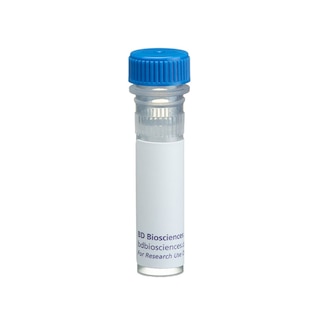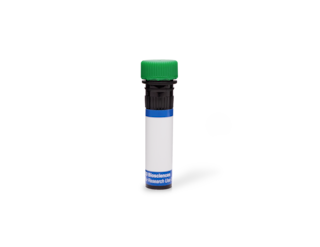-
Reagents
- Flow Cytometry Reagents
-
Western Blotting and Molecular Reagents
- Immunoassay Reagents
-
Single-Cell Multiomics Reagents
- BD® OMICS-Guard Sample Preservation Buffer
- BD® AbSeq Assay
- BD® Single-Cell Multiplexing Kit
- BD Rhapsody™ ATAC-Seq Assays
- BD Rhapsody™ Whole Transcriptome Analysis (WTA) Amplification Kit
- BD Rhapsody™ TCR/BCR Next Multiomic Assays
- BD Rhapsody™ Targeted mRNA Kits
- BD Rhapsody™ Accessory Kits
- BD® OMICS-One Protein Panels
-
Functional Assays
-
Microscopy and Imaging Reagents
-
Cell Preparation and Separation Reagents
-
- BD® OMICS-Guard Sample Preservation Buffer
- BD® AbSeq Assay
- BD® Single-Cell Multiplexing Kit
- BD Rhapsody™ ATAC-Seq Assays
- BD Rhapsody™ Whole Transcriptome Analysis (WTA) Amplification Kit
- BD Rhapsody™ TCR/BCR Next Multiomic Assays
- BD Rhapsody™ Targeted mRNA Kits
- BD Rhapsody™ Accessory Kits
- BD® OMICS-One Protein Panels
- France (English)
-
Change location/language
Old Browser
This page has been recently translated and is available in French now.
Looks like you're visiting us from {countryName}.
Would you like to stay on the current location site or be switched to your location?
BD Transduction Laboratories™ Purified Mouse Anti-Karyopherin α
Clone 2/Karyopherin α (RUO)





Western blot analysis of Karyopherin α on a HeLa cell lysate (Human cervical epitheloid carcinoma; ATCC CCL-2.2). Lane 1: 1:2500, lane 2: 1:5000, lane 3: 1:10,000 dilution of the mouse anti-karyopherin antibody.

Western blot analysis of Karyopherin α on a HeLa cell lysate (Human cervical epitheloid carcinoma; ATCC CCL-2.2). Lane 1: 1:2500, lane 2: 1:5000, lane 3: 1:10,000 dilution of the mouse anti-karyopherin antibody.

Immunofluorescence staining of WI-38 cells (Human lung fibroblasts; ATCC CCL-75).




Regulatory Status Legend
Any use of products other than the permitted use without the express written authorization of Becton, Dickinson and Company is strictly prohibited.
Preparation And Storage
Recommended Assay Procedures
Western blot: Please refer to http://www.bdbiosciences.com/pharmingen/protocols/Western_Blotting.shtml
Product Notices
- Since applications vary, each investigator should titrate the reagent to obtain optimal results.
- Please refer to www.bdbiosciences.com/us/s/resources for technical protocols.
- Caution: Sodium azide yields highly toxic hydrazoic acid under acidic conditions. Dilute azide compounds in running water before discarding to avoid accumulation of potentially explosive deposits in plumbing.
- Source of all serum proteins is from USDA inspected abattoirs located in the United States.
Companion Products


The two step process of importing proteins into the nucleus involves the binding and interaction of several cytosolic and nuclear pore proteins. Proteins to be translocated into the nucleus contain a nuclear localization sequence (NLS) which is recognized and bound by carrier proteins in the cytosol. Heterodimers belonging to a highly conserved family of proteins called karyopherins are required for successful nuclear localization of cytosolic proteins. The α-subunits appear to function in the binding of NLS (both simple and bitartite NLS motifs), but both α- and β-subunits are required for successful docking to the nuclear envelope. ATP is required for complete translocation of proteins into the nucleus. Karyopherin α2 was first identified as Rch-1, an NLS receptor which interacts with the RAG-1 recombination-activating protein in developing B and T cells. Rch-1 has been reported to be 44% identical to karyopherin α1 (hSRP-1 /NPI-1).
This antibody is routinely tested by western blot analysis. Other applications were tested at BD Biosciences Pharmingen during antibody development only or reported in the literature.
Development References (4)
-
Cuomo CA, Kirch SA, Gyuris J, Brent R, Oettinger MA. Rch1, a protein that specifically interacts with the RAG-1 recombination-activating protein. Proc Natl Acad Sci U S A. 1994; 91(13):6156-6160. (Biology). View Reference
-
Grozinger CM, Schreiber SL. Regulation of histone deacetylase 4 and 5 and transcriptional activity by 14-3-3-dependent cellular localization. Proc Natl Acad Sci U S A. 2000; 97(14):7835-7840. (Biology: Western blot). View Reference
-
Moroianu J, Hijikata M, Blobel G, Radu A. Mammalian karyopherin alpha 1 beta and alpha 2 beta heterodimers: alpha 1 or alpha 2 subunit binds nuclear localization signal and beta subunit interacts with peptide repeat-containing nucleoporins. Proc Natl Acad Sci U S A. 1995; 92(14):6532-6536. (Biology). View Reference
-
Weis K, Mattaj IW, Lamond AI. Identification of hSRP1 alpha as a functional receptor for nuclear localization sequences. Science. 1995; 268(5213):1049-1053. (Biology). View Reference
Please refer to Support Documents for Quality Certificates
Global - Refer to manufacturer's instructions for use and related User Manuals and Technical data sheets before using this products as described
Comparisons, where applicable, are made against older BD Technology, manual methods or are general performance claims. Comparisons are not made against non-BD technologies, unless otherwise noted.
For Research Use Only. Not for use in diagnostic or therapeutic procedures.